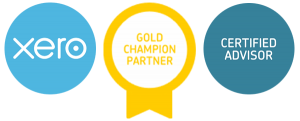


Understanding bounce back loans
Bounce back loans were introduced by the government to support small businesses struggling with the impacts of coronavirus. The loans launched in fears of small businesses not being able to access coronavirus funding quickly enough.
Bounce back loans offer a 12 month interest free period on amounts ranging from £2,000 up to £50,000. With the aim of getting funds out to small businesses as quickly as possible.
With little eligibility needed and a 12 month interest free period, the bounce back loan can be seen as an appealing offer. But it’s important to know a few key details when utilising the funds. If funds are used incorrectly you could be held liable.
There is currently a plethora of information and advice on bounce back loans. In this article we will cut through the jargon and explain what bounce back loans are, how they work and what to know when using them.
What are bounce back loans?
Bounce bank loans are facilitated through approximately 14 UK banks and are backed 100% by government funding. The loans were initially set up for small businesses who are struggling to access CBILS funding.
Unlike a mortgage where the property becomes a secured asset, the bounce back loans are unsecured. This is because the loans are backed by government funding, making them quicker to distribute.
Some key points on the loans;
How they work
Most accredited lenders, especially banks, are only accepting existing customers and a typical application requires details of your annual turnover, account number, the amount you wish to borrow, a copy of your recent tax return and confirmation that your business has been impacted by Covid.
Once an application has been made to an accredited bounce back lender the process should be completed within 48 hours. With funds being paid out on the same day of approval – although this can vary depending on the lender. The best place to start is with your current bank.
Once set up, no interest is charged nor is payment required for the first 12 months. After this 12 month period an annual interest will be calculated based on the outstanding principal.
After the first 12 months, interest will be calculated on the outstanding principal month to month. Meaning, whatever is left of the original amount borrowed (the principal) will be used to work out how much interest needs to be paid. This means your monthly payment overtime will decrease and change as the amount of outstanding principal reduces. Very much like a business overdraft.
If you are able to pay off the loan early, then the amount of interest will be calculated based on the outstanding principal and days of use. Which would result in a slight saving. Put simply, the longer you have the loan the more interest you pay.
Using a bounce back loans to support your income
There is a lot of advice floating about on how to utilise a bounce back loan. Currently there are no strict rules on using the bounce back loan to support your income. The bounce back loans are there to cover business costs.
If you are a limited company director the money you receive is not yours. It’s for the business. However, there are three ways of receiving funds from the business to supplement your income.
These are;
It’s important to know;
If you are a sole trader and use a bounce back loan by taking cash from the business, it’s important to note you are liable to repay the loan.
Working with your accountant
There are lots of schemes and support out there for small businesses. From the coronavirus business interruption loan scheme, to alternative lending and of course, bounce back loans.
Right now, the biggest challenge to businesses is running them. Adapting to regulations and ensuring the day to day operations are working. It can be hard to focus on getting money into the business from one of the multiple support schemes, let alone understanding the longer-term impacts.
As a company director, a quick injection of money now from a bounce back loan, done incorrectly could leave you with either a 32.5% tax bill or personally liable should your business become insolvent.
Understanding your businesses realtime cashflow and projected earnings are more important than ever. Bringing your accounts up to date and placing procedures to keep them updated is vital. Not only will this allow your business to make applications with ease, move quicker, but you’ll be able to weigh up all of your options available. Meaning you are able to look at the longer term impacts of taking finance.
By just understanding your cashflow position and building a plan, might be all it takes to navigate this turbulent time. A good quality accountant will not only be best positioned to support you, but they’ll act as your rock for times to come.
In summary…
In summary a bounce back loan allows your business to borrow up to 25% of your annual turnover, with the first 12 months interest free, requiring no repayments.
Whilst it might seem like a great idea to inject cash into your business, to support income, there is the potential to open up personal risk.
Speaking with your accountant and bringing your data up will be the best place to start. Here at Mayz, we are continuing to release information and support small businesses. With our expert knowledge and capable tools, it’s our duty to not only support small businesses right now, but to future proof them for the better.
